RJ Casey | August 20, 2025
After last month’s marathon of a column where I let you get a peek into the cogs and gears of my head, I’m happy to close that door for good and get back to my roots. That’s right — it’s time to cook up some callous, quick-hitters. Let’s go.
 Pleasure Beach #1 by Josh Pettinger
Pleasure Beach #1 by Josh PettingerPleasure Beach #1 by Josh Pettinger
We’re starting this month off right with a new one by Josh Pettinger, a favorite of this column, whether he believes it or not. And before you can even open the first issue of his new series you’ll notice a door jamb in the form of a good, ol’ fashioned belly band. Too many big- to medium-sized publishers have been burned by them in the past — falling off, ripping, discoloring, or otherwise tarnishing a cover — that its set belly band advancements back decades. Silly rabbit, belly bands are for self-publishers. In this home we support belly bands. Welcome back.
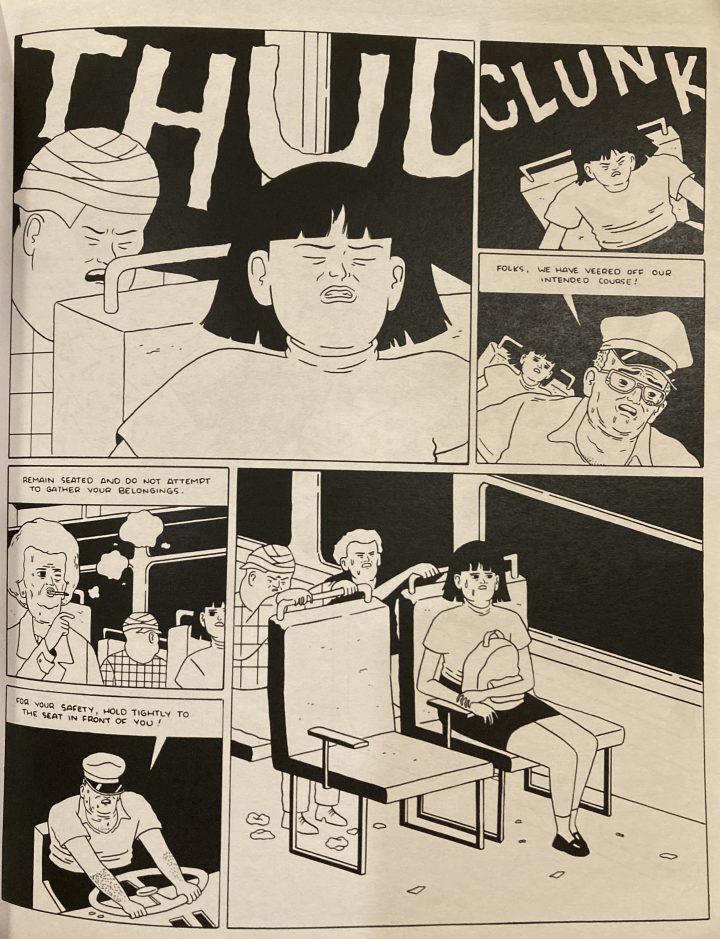 interior page from Pleasure Beach #1 by Josh Pettinger
interior page from Pleasure Beach #1 by Josh PettingerPettinger resumes his quest to be the man of letters regarding naked pasty little kinky cowards (a Winter of our Dick Content, if you will) and this anti-erotica crusade continues. In Pleasure Beach, small town corruption and cold degeneracy go hand in clammy hand. Beryl, a twentysomething with a bob, makes her way home via ferry and bus windshield and catches up with old acquaintances in the worst possible ways. The considerable differences between this comic and Pettinger’s previous work are the very obvious ways he’s developing and surpassing himself artistically. Not a single artist renders tile floors, sitting water, or chain-link fences better in the world. More importantly and impressively is how Pettinger has upped his storytelling with real urgency and swagger. He’s always been good for a real chuckle, but no one’s walking away from Pleasure Beach unscathed. Even when the laughing stops, even when the cover’s closed, there’s still much to mull over.
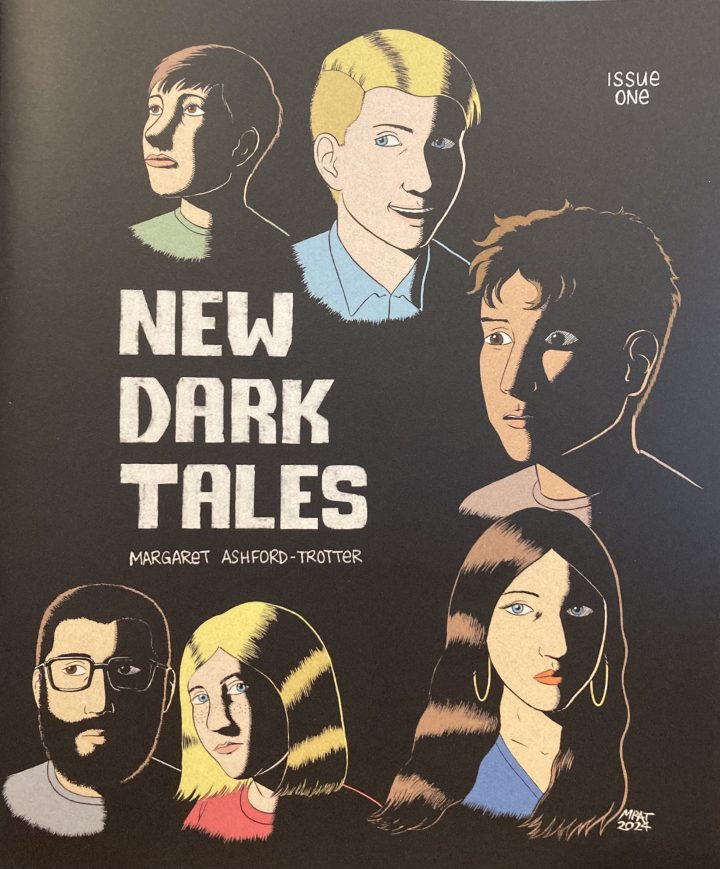 New Dark Tales #1 by Margaret Ashford-Trotter
New Dark Tales #1 by Margaret Ashford-TrotterNew Dark Tales #1 by Margaret Ashford-Trotter
This story takes place during the rash of 2016 clown sightings, which I only remember because my grandmother would send me clipped articles from the Chicago Sun-Times about it in the mail. In the introduction, Ashford-Trotter hints at theories that might explain why this potentially made-up phenomena started and why it fizzled out. I’d be much more interested in a comic about that than what makes up the rest of New Dark Tales.
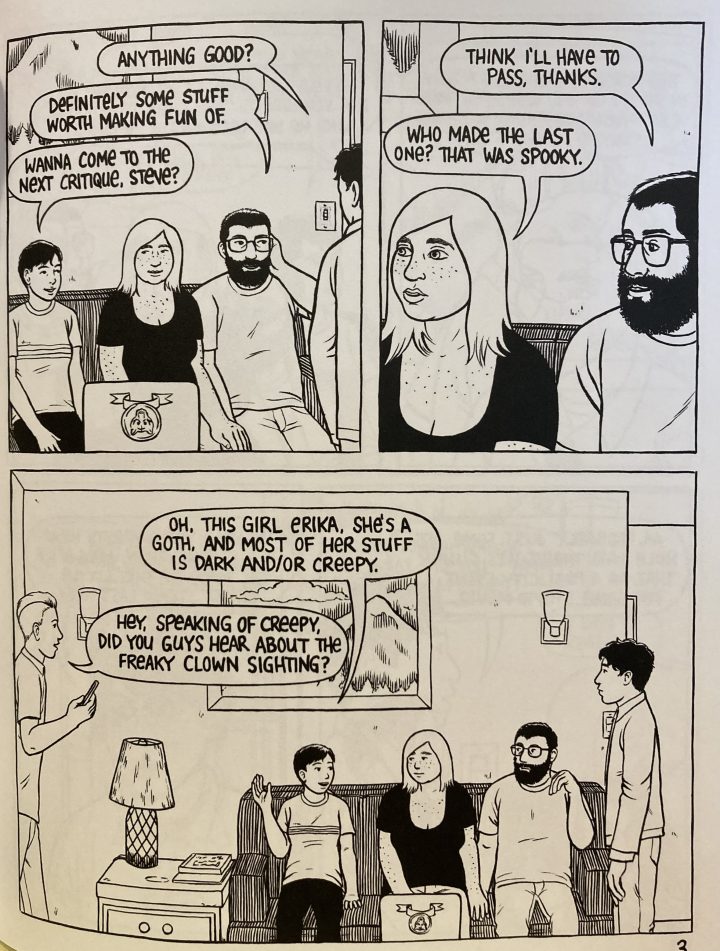 interior page from New Dark Tales #1 by Margaret Ashford-Trotter
interior page from New Dark Tales #1 by Margaret Ashford-TrotterArturo sees the ghost of a little boy in the attic, but Hayden doesn’t believe him. Lindsey sees the same ghost in the yard while getting ready to go on a date with Steve. Jillian hears shuffling in the house late at night. All of these roommates are also interested to discover if Emma, Steve’s sister, has had any paranormal encounters. You see what I’m getting at here: that’s a lot of characters for just 35 pages of story and there’s not nearly enough justifiable concern for any of them. On the plus side, Ashford-Trotter is brilliant at inking dark rooms and shadows. She does this really neat effect around eyes that I don’t recall ever seeing before. Unfortunately we only see this stellar shading in about three panels and the rest of the comic is lit like it’s on the surface of the sun. It’s not just the brightness that makes this comic feel like a three-camera sitcom, but also the way it’s paced, blocked, and how everyone speaks like a cop. (“I knew it was near the south wall.” “Was he maybe like seven or eight, short dark hair, in a striped T-shirt?”) Hayden sets up Arturo and scares him in a Halloween clown costume. Later, Hayden is found bleeding in the attic stairwell. The little boy ghost doesn’t appreciate circus antics. It’s a nice, tidy — but not at all witty — ending. If there’s more Tales to be told, this author would benefit from keeping her audience a bit more in the dark.
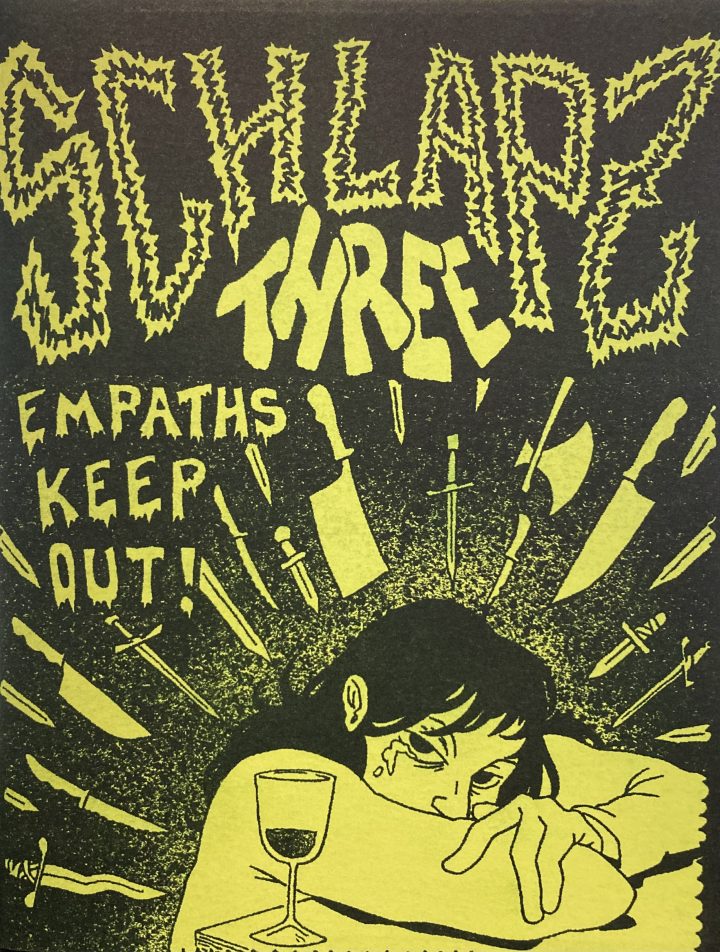 Schlapz #3 by Al Lasser
Schlapz #3 by Al LasserSchlapz #3 by Al Lasser
Here’s an ethics experiment: If you had access to a time machine, would you use it to go back and assassinate baby Half-Baked-Self-Loathing-Woe-Is-Me zine? Would this temporal paradox make all comics better in the long run? Or would comics themselves cease to exist? Those were just some thoughts swirling around my mind as I was reading pages of Lasser lying on a bed and asking herself if she’s a narcissist, sitting on a toilet and considering if she’s experienced “ego death,” and getting her hair stuck in a vacuum. (OK, I really enjoyed that last one.) Lasser’s drawing chops are crystal clear to observe, so I can’t help but feel the time she spent making these autobiographical stories could have been spent on something more artistically gratifying for everyone. But just maybe I’m wrong. Just maybe I have no idea what temporal paradox even means.
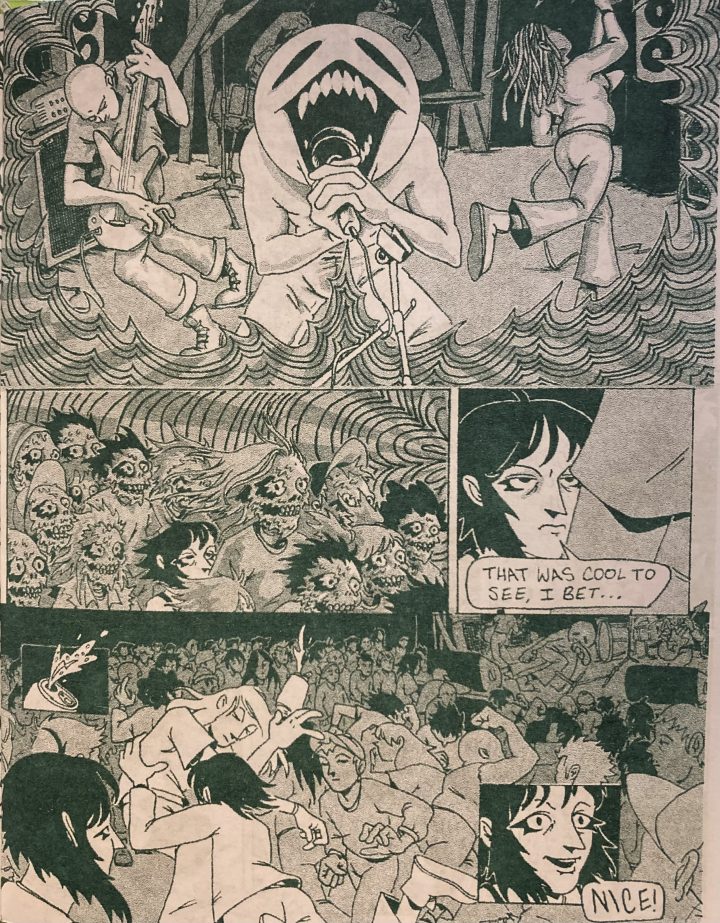 interior page from Schlapz #3 by Al Lasser
interior page from Schlapz #3 by Al LasserFortunately for us, Schlapz is a zine in three parts. The second portion, dispersed over several one or two-page spreads, consists of straight-up sketchbook pages. These feature dozens of flawlessly drawn cartoony-realistic heads and put Lasser in the upper echelon of compulsive face drawers with Nate Doyle and Garrett Young. Lastly we have the longer fictional comics (like the ode to a local burned down liquor store and another about being short during a show at a spectral rock club) that are extremely readable. The green cover pops and I respect the throwback nature of the construction and content of Schlapz, but all of it proves that Lasser is much better when looking outward than inward.
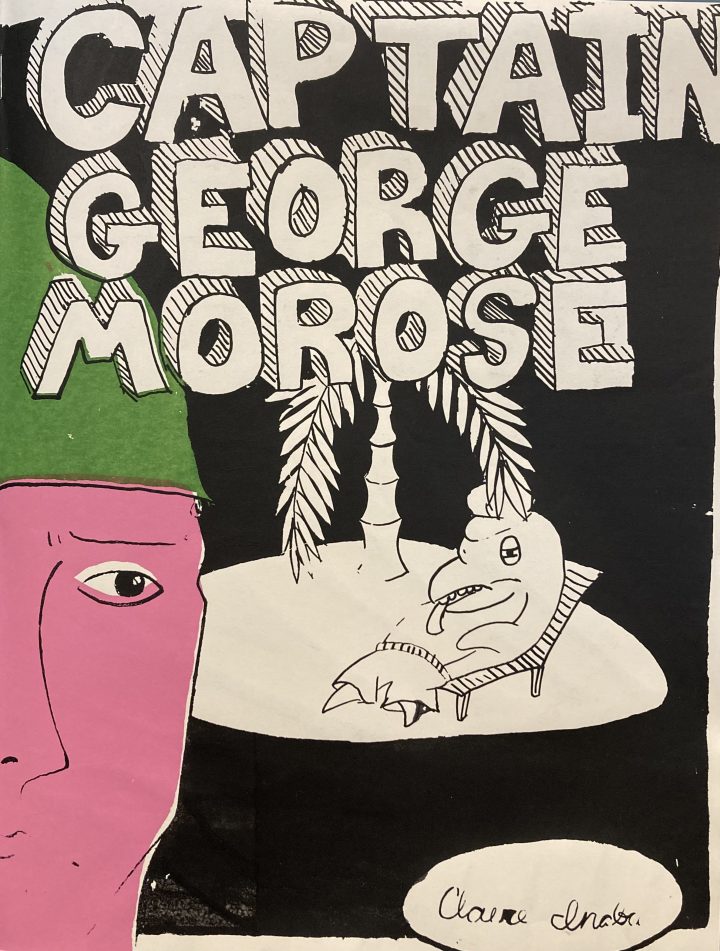 Captain George Morose by Claire Inaba
Captain George Morose by Claire InabaCaptain George Morose by Claire Inaba
In Morose we start in media res, with res being an armed clash up an elevator toward Peace Island. Captain Morose dons a skin-tight bodysuit, a primitive-looking triangle laser gun, and bright pink skin. He also has an unceasing desire to go further and further into his unflinchingly kaleidoscopic surroundings. Inaba infuses the comic’s inspired coloring with subtle collage elements — portions of pages are drawn on graphing sheets, yellow receipts, and crumpled paper. Later on we’re introduced to another important character named Brother Nothing. He’s a cigarette smoking dolphin in a flat-brimmed hat who speaks in hard to read cursive lettering. None of this comic is completely comprehensible to me, but it’s not a bad-trip bore either.
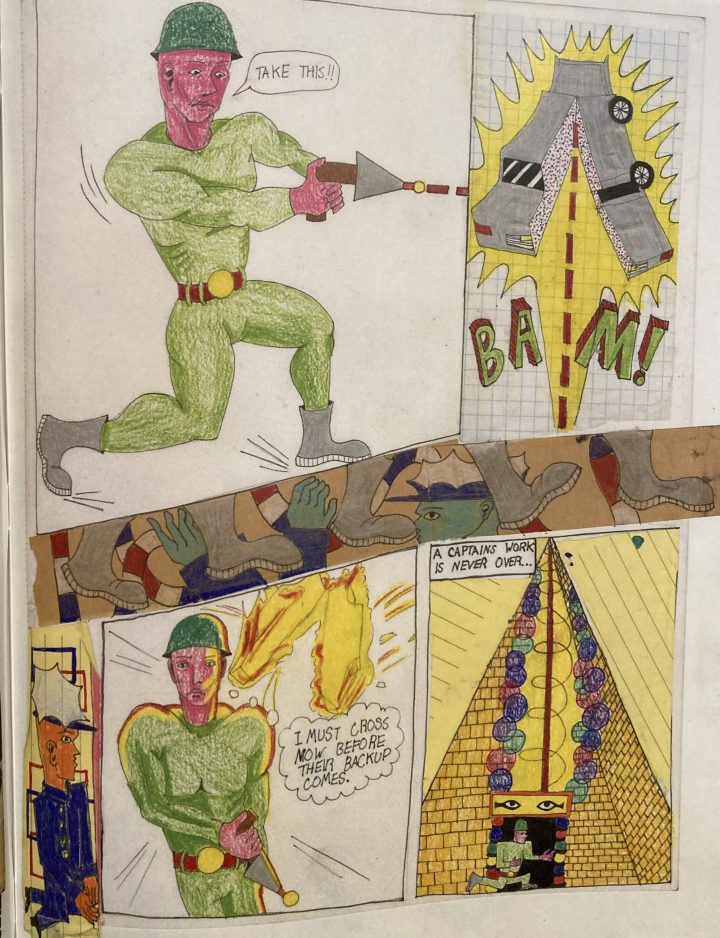 interior page from Captain George Morose by Claire Inaba
interior page from Captain George Morose by Claire InabaThe White House is turned into a gulag. One of its residents is an octopus who becomes a senator in Utah. References are made to all this happening in the shadow of the 2028 Olympic games. I don’t know if Inaba is trying to say anything pithy here or just using iconography to push deeper into perplexity. Rather than a genre narrative, sci-fi and military action tropes are used here as a form of expressionism. After many years of reading art comics I’ve learned it can be beneficial to throw your hands up and let the artist take the wheel and steer, but that has to be earned. I’m not sure I can trust Inaba just yet. If there’s a contest here between convoluted Outsider-Art-esque psychedelia and fancy free NY art school soliloquy, I think it’s a draw.
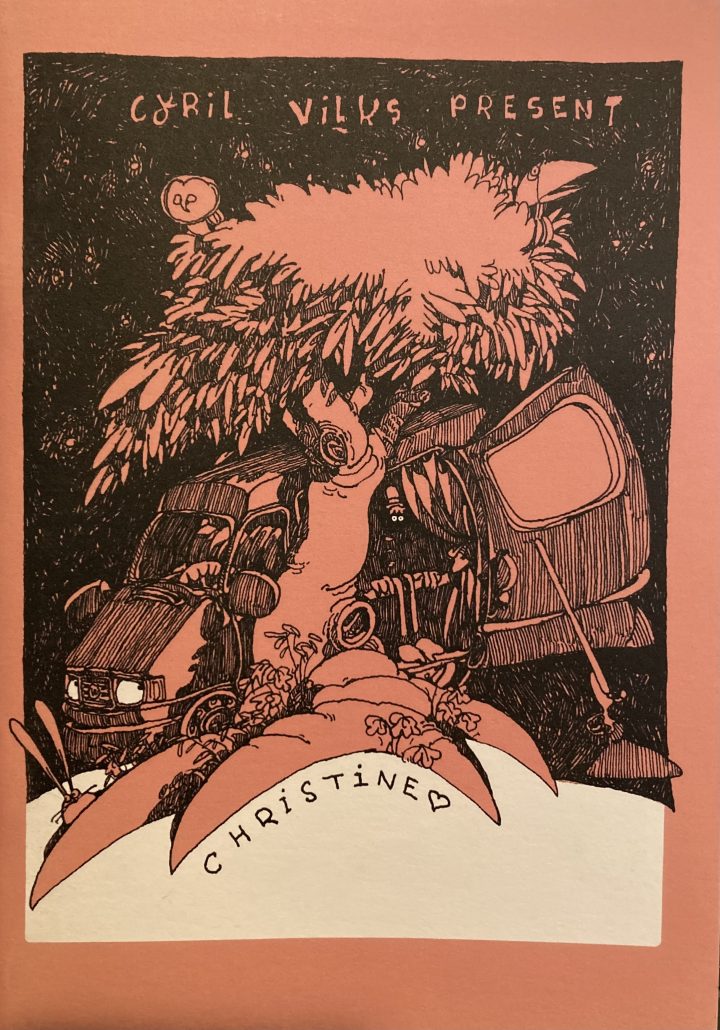 Christine by Cyril Vilks
Christine by Cyril VilksChristine by Cyril Vilks
Breaking news! Ub Iwerks is alive and lives in a van in France. Or should the headline read something like, “Tomi Ungerer agrees to star in Into the Wild”? Of course I’m being reductive here because Vilks is an all-star talent in his own right. His desperately political and paranoid oil paintings are so in line with classic narrative cartooning I thought they warranted a spot in my “Best Comics of 2024” list last year. This is the first actual comic I’ve been able to read of his in full simply because it’s in English — the spelling and syntax are slightly off, but nothing else matters when you’re reading one of the best drawers alive completely in his bag.
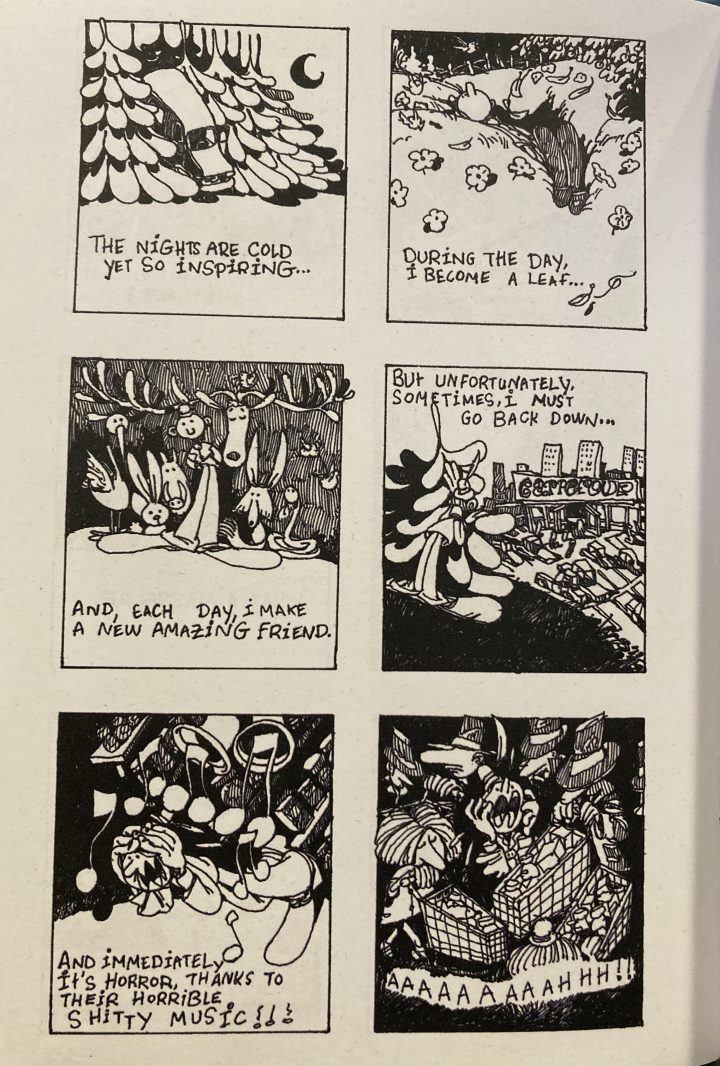 interior page from Christine by Cyril Vilks
interior page from Christine by Cyril VilksChristine (the name of his van/home) looks like a comic about one of the guys in a Segar crowd scene but instead of watching Popeye and Ox beat on each other one more time, he throws on a bowler hat and lives a rewarding struggle of a life, alone and autonomously. Every page has six same-size panels and the ink looks slung right onto the paper. The stories run together and would technically be considered autobio, but Vilks has no qualms exaggerating for the sake of punchline or metaphor. I admit the frequent pose of “Look at all the losers. I’m the only sane one!” can be grating, but Vilks has enough charm and flair to make it work. Later on in the comic — and connecting to the overarching theme of all 50 pages — he notices that he’s sold paintings in Mumbai, Moscow, and Melbourne, but still gets stalked by security guards every time he enters an art supply store. Christine is about trying to find isolation and tranquility inside the capitalist, carceral state the world is in right now. But rather than weep in despair, Vilks’s comics make me want to greet a sunrise.
Thus concludes two full years of “Arrivals and Departures.” Break out the Zebra Cakes and Prosecco. Anything is possible! See you next month, I hope.
Questions, love letters, and submissions to this column can be directed to @rjcaseywrites on Instagram.

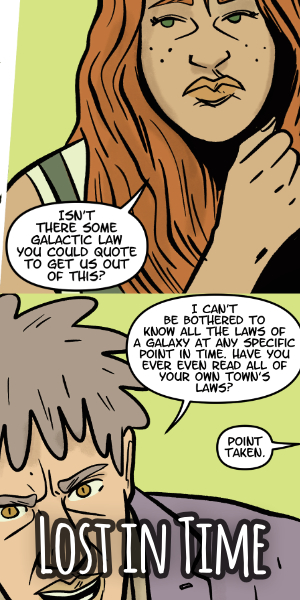





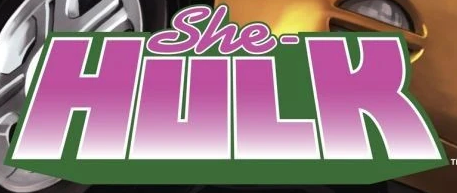
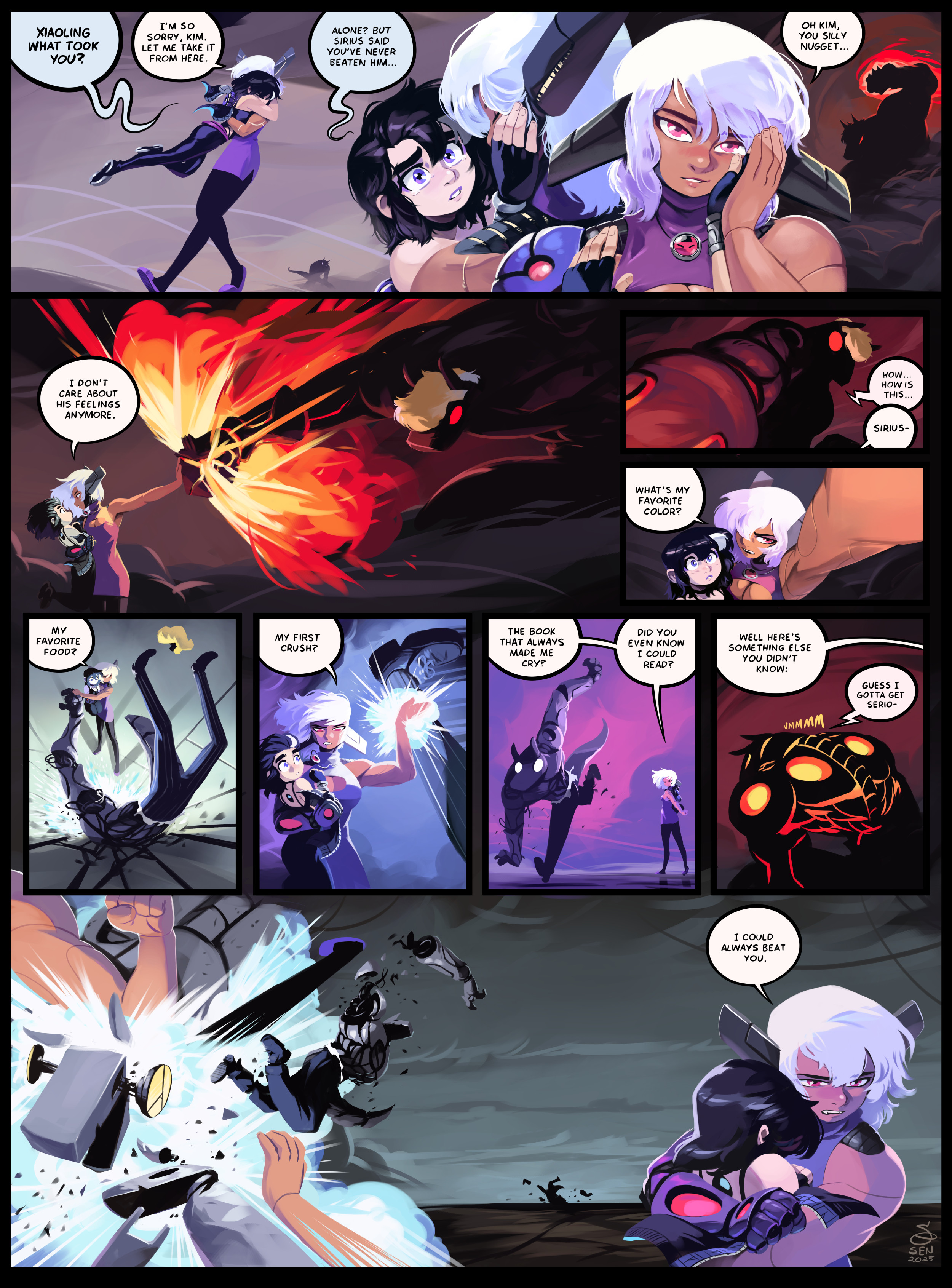
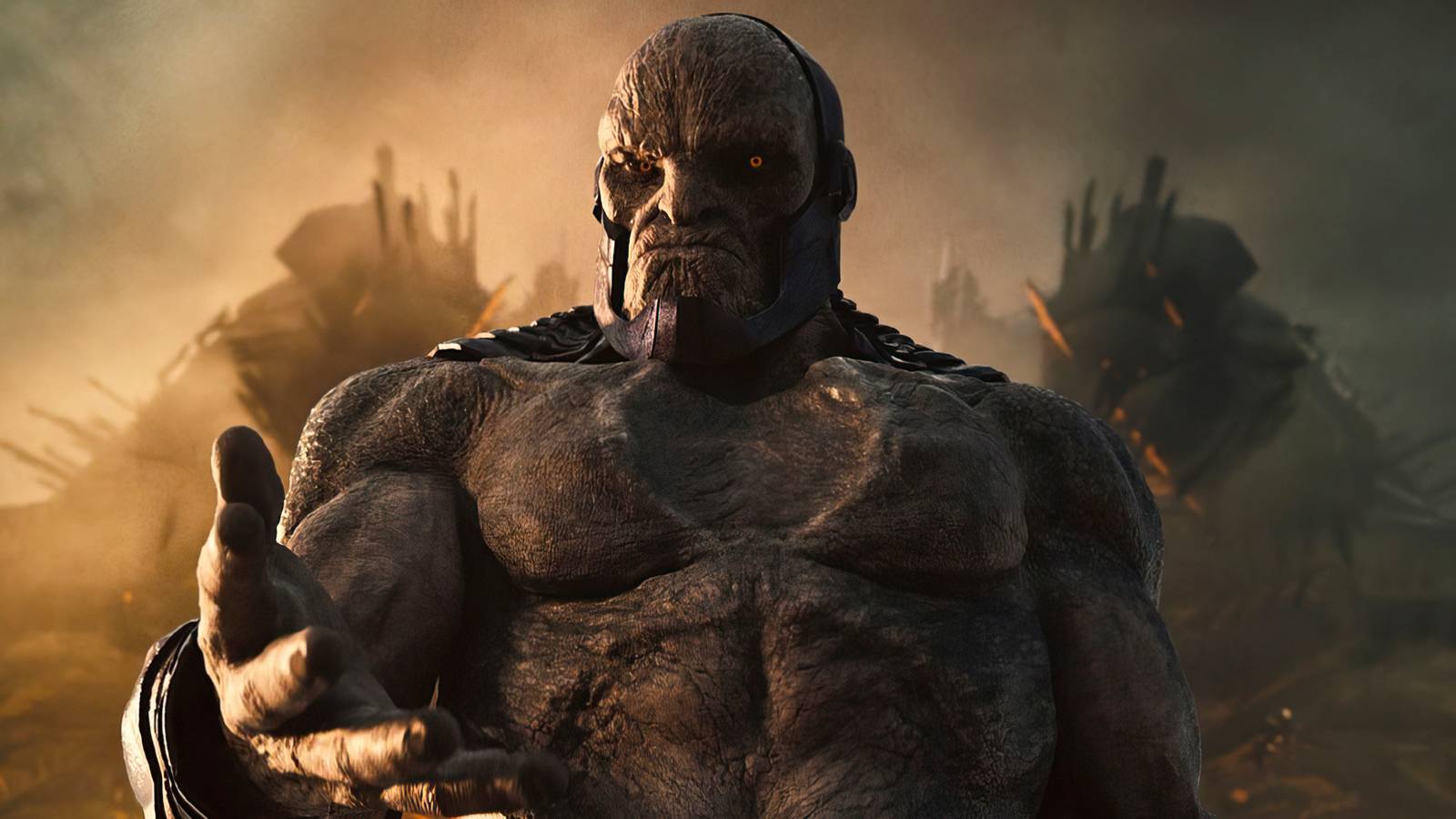

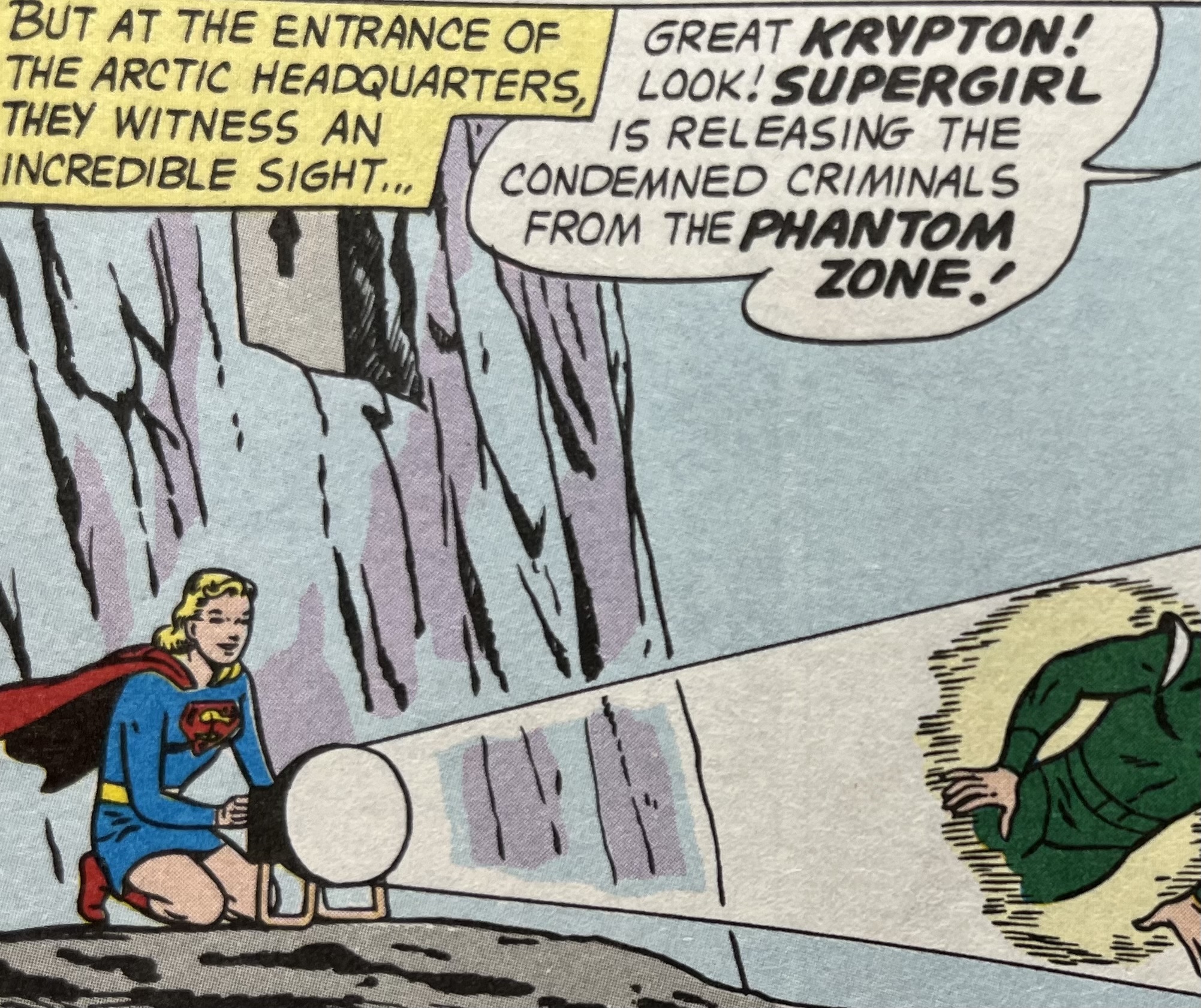
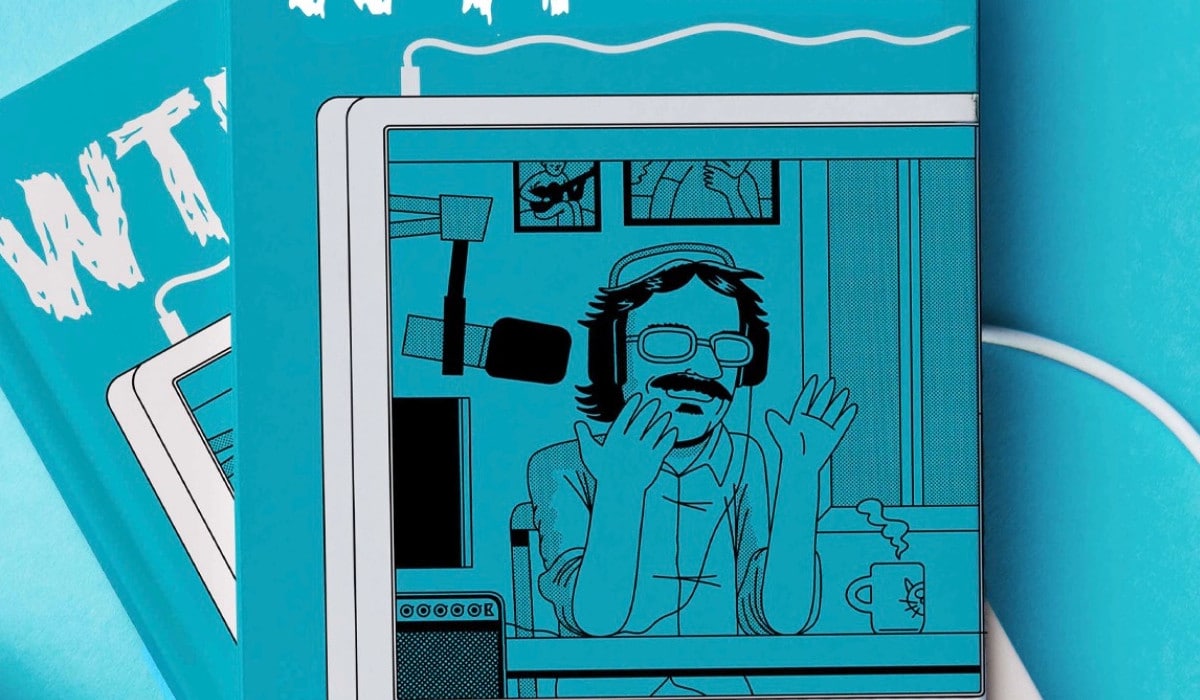



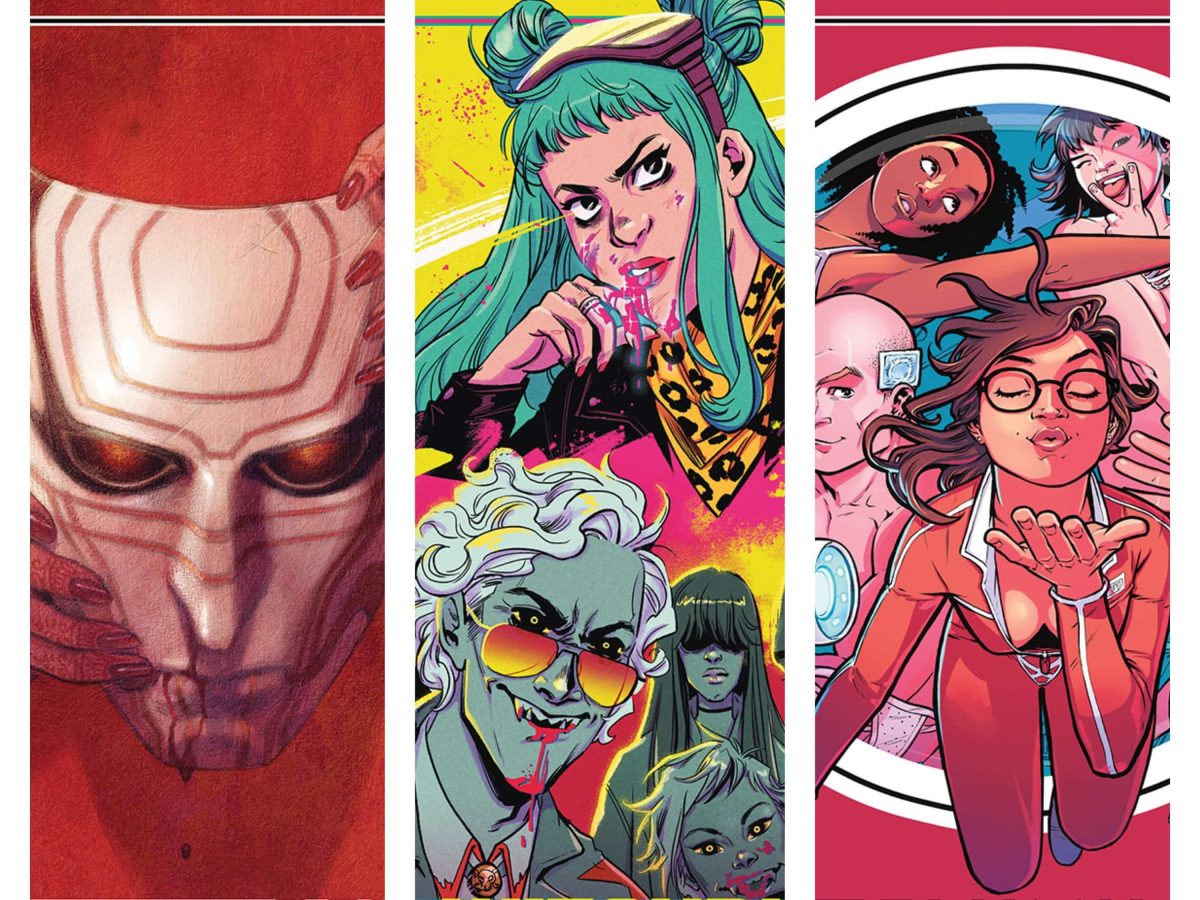



 English (US) ·
English (US) ·